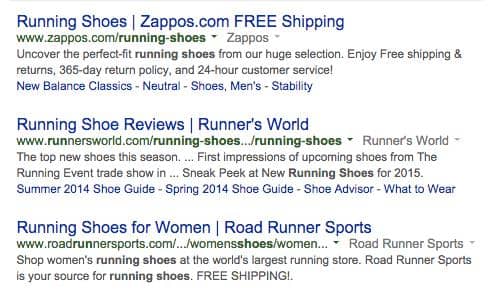
Let’s be real for a moment with SEO strategy. Your job title probably includes terms such as content marketing, lead generation, and lead nurturing, indicating that you either love SEO, hate SEO or hate SEO deeply.
Marketers who hate SEO do so because it can be more difficult to measure direct results than other channels and be more complicated than other marketing channels.
Those of you who are into “hate” or “hate deeply” may reconsider after reading this post since modern SEO strategies might be enjoyable and can’t disappear anytime soon. Could this be possible?
There aren’t any more “weird” or gray hat SEO methods that actually work. In the new millennium of SEO, it’s all about tactical decisions that make sense.
Table of Contents
In a world where 61% of B2B buyers begin their research process with a general Internet search, SEO has never been more vital.
The truth is that SEO is often at odds with the advertising platform (search engines) since these platforms can and do change the rules whenever it is in their best interest, with or without notice.
The argument has been made that SEO hasn’t changed much, which can be agreed upon. The change, however, is mainly in methods, best practices, and recommended strategies.
It’s only natural to feel hatred for SEO if you’ve invested time and energy into a black hat and gray hat SEO techniques (or searches that go against Google’s guidelines) that Google now quickly spots or even penalizes.
Suggested Read: The Ultimate Recipe for SEO Success in 2024
In the entire post, you’ll get familiar with the modern SEO strategies of 2024. Would like to get your business going, then you’ve to opt for these strategies, sure. Let’s get started-

SEO has undergone many changes over the past few years, including a move away from strategies based on using keywords excessively.
This logic seemed reasonable at the time: want to rank for a keyword? Use it as much as you can. Include that keyword on every page of your site!
Ensure the keyword is in the right places, such as title, meta description, header, etc., and, of course, monitor your keyword density. When you choose the keyword right, Google will assume that you are an expert on it!
The method worked for a while, but times have changed! (Especially Google) have learned that ranking highly on pages about keywords does not necessarily delight users as much as high rankings on authoritative pages about topics.
While it is still imperative to include keywords in SEO content strategies, it is important to shift away from the philosophy of “be sure the keyword is EVERYWHERE.
Nevertheless, most marketers are glad for the change. As a result, content can once again be built based on our users’ needs rather than trying to satisfy obscure search engine requirements and expecting to see some SEO benefits.
Marketing professionals, pay attention! Ideally, each topic hub should include:

It’s not just about knowing which keywords your audience uses; it’s also about understanding what they’re really looking for when they use those search terms.
When a user types in “marketing automation,” are they looking for a definition? How about a free download? Will he hire someone to handle all his marketing automation, or is he looking for software he can install himself? You can tell what user intent is by answering these questions.
Understanding a user’s mind may seem impossible, but we’re not the only ones with a curiosity about it. Google works tirelessly to provide the best user experience possible and continues to do so. We can, therefore, simply Google most things.
The reason you’ll notice multiple user intentions when you examine the SERPs for your keywords is that different users are searching the same keywords with different intents.
However, you might have one that truly stands out among the rest, or you might have two or three that seem to be equally important.
What do you do if you don’t know the user intent(s) for a given keyword? The answer is quite simple: just study Google search results. Because a massive amount of data has been curated by Google to deliver highly targeted search results for every user.
Search results indicate what real users are searching for (or what they don’t) by the exact variety (or lack of variety) of results.
Take a look at a few examples. As shown below, a depersonalized search for “running shoes” yields these top three results:

As you can see, the first and third pages focus on retail, while the second page is devoted to a review of several brands.
To review all the results on page 1, you must scroll past the advertisements and image blocks, but based on this small sample, we can assume that the primary user intent is to purchase shoes, and a secondary intent is to gain information-specifically, to find reviews. (Interestingly, the third result is for women’s shoes.
If you are selling running shoes, you should make sure to emphasize your collection of women’s shoes on your website.)
As a comparison, the following organic listings come up in a depersonalized search for “carburetor“:

It appears that two of the three websites provide information, rather than products, suggesting that the primary intent for the keyword “carburetor” is an informational one.
Therefore, you need to have a clear content strategy: for example, if an auto body shop is trying to rank for “carburetor,” they are likely to have better success with a topical page that answers users’ most common questions.
Using Google for research of this kind shouldn’t be viewed in isolation. So, utilize your own knowledge of your industry, along with any consumer or market data you might have to develop a user intent-based content strategy.
Suggested Read: Top SEO Analytics Tools and SEO Reporting Tool: Best 15 in Count
The process of analyzing SERPs for user intent is enlightening, and when it is coupled with other elements of keyword research, it provides a solid framework for the development of a killer content strategy. This is how you build a content framework:
There is a good chance that some of your keywords will be similar or produce similar search results if you have a long list of keywords.
As an alternative to examining each keyword separately, group them into tightly related composites – “New York lawyer” and “New York attorney”, for example.
Open a few tabs in your browser and compare those SERPs side-by-side if you have several keywords in each composite. You don’t have to use every single keyword in every composite, but it’s a good idea to try a few. Maybe you’ll find something interesting. The goal is to determine the generic user intent for the composite.
Each keyword composite will probably have multiple intents, just as in the example above. In the search engines, when one intent dominates the SERPs, we call this a Dominant User Intent.
The common user intents are those that have two or three balanced results. Whenever an intent is represented in more than three results, this is called a Minor Intent.
For this purpose, you will need a spreadsheet with column headers such as:

By doing so, you can then prioritize your content strategy based on the results of this research. Firstly, using Common User Intents 1 and 2, we constructed two (topical) pages for the first keyword group to improve the ranking.
Secondly, a page of content focused on the Dominant User Intent was created to optimize ranking for keywords within the second composite group. And, Similar user intents may be combined into one authoritative page in some places last.
By completing this simple exercise and using the spreadsheet, you can visualize how users feel about the search terms/keywords you want to rank for so that you can design content that will provide the best user experience and earn Google’s consideration.
According to one of the most common complaints, organic search traffic does not convert that well. In consulting situations, when this topic arises, I always ask the question, “Are you actively converting SEO traffic (or anything at all)?”
These organic search visits do not belong to you the moment they land on your site. Often, this is the first time they have encountered your brand, and, most importantly, they know that thousands of additional search results are easily accessible with a click of the back button!
Your goal is, of course, to keep those users on your site as long as possible. Help them achieve their specific task (or “user intent”, as described above) by providing them with assistance. That typically means answering their questions clearly and concisely, especially in the B2B environment.
Additionally, it is important that the experience visitors have with your page or website is intuitive, easy to navigate, and centered around their immediate needs (rather than on your marketing goals.)
That means that all content should be above the fold, navigation should be simple and easy to follow, and testing should demonstrate that this can be done in a relatively short amount of time.
It is possible that even the best of your first-time visitors may not return a second time if they browse your site for five to ten minutes (or more).
Research shows that there are several factors that contribute to brand preference, including the mere-exposure effect, which explains how people unconsciously associate themselves with a certain brand when they are familiar with it.
Therefore, you need to earn the chance to reconnect after your first visit. These options can assist you in doing so
Suggested Read: Top 8 Keyword Research Tools in 2022: Effective SEO Strategy
Most of the tactics we’ve discussed here have been about content marketing. How about coding? In today’s SEO world, technical factors still matter but no longer provide any competitive advantage.
In the modern SEO world, technical SEO can be considered a barrier now, whereas having perfect content and a great user experience are the things that matter the most to get ranked and traffic.
Even in the past year, the world of SEO has certainly changed. Creating relevant, topical content, regardless of whether or not it has SEO benefits, can do a lot more to promote your brand. Not to mention, it’s more rewarding.